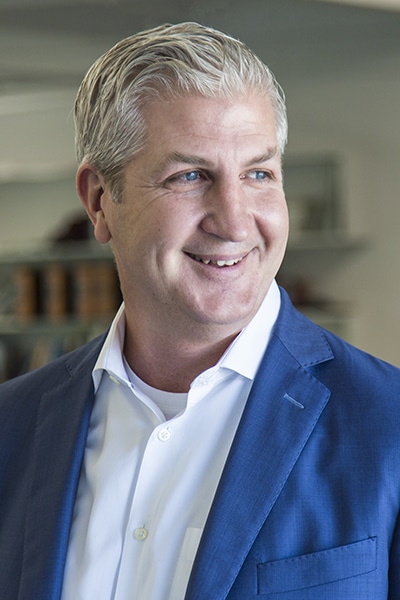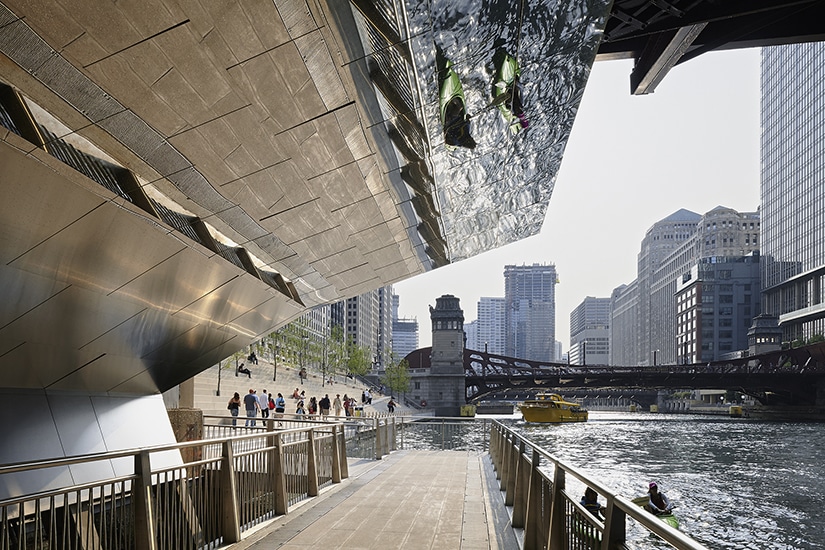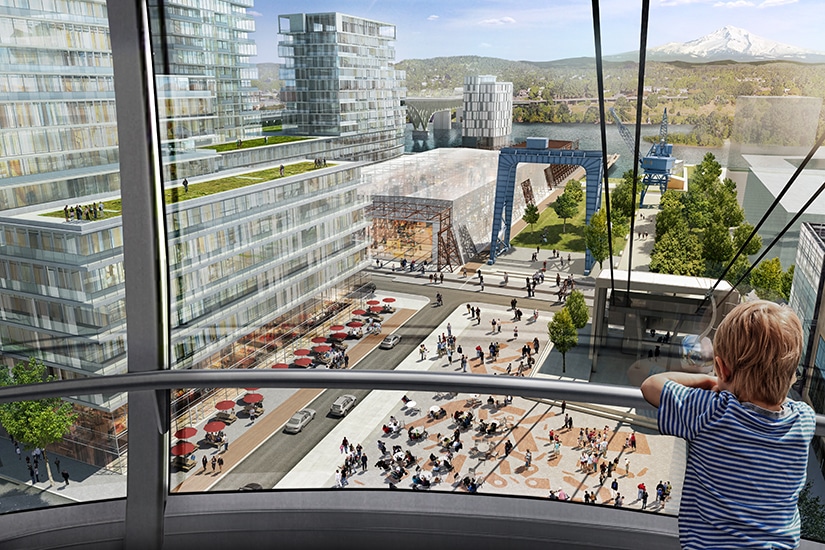|
Getting your Trinity Audio player ready...
|
The work of planners, architects, landscape architects, and interior designers is a bold and brave endeavor. They can transform and reengineer landscapes, turn congested streets into pedestrian promenades, popularize rapid bus transit, reorient our relationship to rivers, and foster human interaction. And if James Miner of Sasaki has anything to do with it, the places we get our food from will be a lot closer, more sustainable, and more affordable.

Miner is the CEO of the Massachusetts-based Sasaki, which is one of the most prominent interdisciplinary studios in the country. He has a TED Talk that delves into the geography of our national, industrialized food system, including how factory farm woes can be reduced if we build distributed, urban, and sustainable farms instead.
When asked how such things as hydroponic greenhouses, container farms, vertical farms, and aquaponics will become commonplace, yielding produce for middle-market American grocery stores, Miner’s response is the model of pragmatism: “Affordability is the issue,” he says. “Getting to scale to compete on price is the number one challenge.”
It’s no small order, but Sasaki makes big plans on a routine basis. Founded by Hideo Sasaki in 1953 on “principles of innovation, collaboration, and perpetual learning,” per the firm’s website, its designers have created some iconic places and spaces that truly change how people live, move, and indulge in nature—and possibly how they think: Chicago’s Riverwalk (2016), Portland, Oregon’s Zidell Yards Master Plan (in progress), Boston’s Kendall Square Akamai headquarters (2019), Boston’s The Lawn on D (2014), and Syracuse University’s Einhorn Family Walk promenade (2016) are recent, domestic examples.
In Shanghai, where Sasaki maintains a second office, Miner looks to the 100-hectare (about 247 acres) Sunqiao Urban Agricultural District project that the firm designed in 2016 as an example. It demonstrates on how, back in the US, someone in Roxbury, Massachusetts, might get reasonably priced arugula in winter from somewhere nearby—and not Yuma, Arizona.

And for all the rich environments the firm creates, a consistent theme of pragmatism drives all projects. Miner describes how the Chicago Riverwalk, for example, achieved approval and nearly $100 million in funding because Sasaki, working with the city, ran the numbers on the sales tax revenues that new retail incorporated into the design, as well as that of adjacent development, would generate (they got it right).
Want to read more stories like this? Subscribe to our bimonthly newsletter for curated stories, industry insights, and more!
But designing such transformative projects is more than just a matter of funding. At the very least, there is a public education task required—if not hostile community resistance to contend with at times. So, Sasaki approaches each task with just the right mix of art and science, using some of the best available tools of design and technology to both envision bold futures and bring people along with them.
This is why the firm hired its first chief technology officer, Holly St. Clair, in early 2020. Miner says they created the CTO position because technology itself is at the forefront of planning, design, and engineering. Tools that are increasingly important include such things as augmented reality (AR) and computational design that can, for example, help optimize for a site’s seasonally variable solar exposure.
Technology can also change public understanding of and receptivity to proposals. “Data visualization is a powerful tool for community engagement,” Miner says.

The mix of technologies and data is particularly useful for converting motorized vehicle streets to pedestrian and bike thoroughfares. Getting people out of their cars or to reroute commercial traffic is a heavy lift. But objective data and technological visualization tools can accomplish a lot. Also, from whom and what kinds of data are collected—and how the data are interpreted and communicated to different audiences—can make public approval more likely.
“There’s definitely a movement to provide more equitable access to quality open space,” says Miner, acknowledging that “for” and “against” sentiments exist in almost every community. The Sasaki approach is to study the interconnectivity between mobility and other urban systems—motorists of all types, pedestrians of various mobilities, bicyclists, autonomous vehicles (AVs), etc.—that informs the design but also the selling of the project. “Identify everyone’s value set,” says Miner. “What matters most to them? Then translate the design in terms of those values.”
Miner’s direction is renowned not only among his team at Sasaki but with his partners outside the company as well. “Congratulations to James Miner for this well-deserved recognition,” says John Hynes IV, vice president of Boston Global Investors. “Under his leadership, Sasaki has cemented its place as a world-class design firm with a vision that is truly collaborative, creative, and passionate. These traits start at the top of an organization, and BGI is proud to call James and the entire Sasaki family our friends and partners. We look forward to many more successful ventures together!”

The nature of the placemaking by Sasaki is that it touches the rich diversity of the populations using their designed places. To do so effectively, the firm recognizes a need for a diverse workforce. Sasaki as an employer, and the firm’s nonprofit arm, The Sasaki Foundation, train their focus on cultivating a diverse pool of talent and working alongside diverse partners. Initiatives include providing design assistance to community organizations; design grants to research teams delving into affordable housing, mobility choice, and climate change resilience; and educational grants and internships that unlock design within underrepresented communities.
Meredith McCarthy, a senior associate architect with Sasaki who coordinates the internship program, summed up what those things can accomplish in a reflection on Sasaki’s website. “We hope to introduce students to design as a problem-solving tool and empower young people who perhaps would not have considered the design industry as a viable career path. Sometimes design can feel inaccessible. We are striving to show the next generation that design is for everyone.”
Those future designers and engineers might be the ones to figure out how to make locally grown food price-competitive—and far more commonplace. And, they may well be the ones to take on the other pressing issues this generation of Sasaki designers has committed to with tenacity: resilience, diversity, equity, and inclusion.


